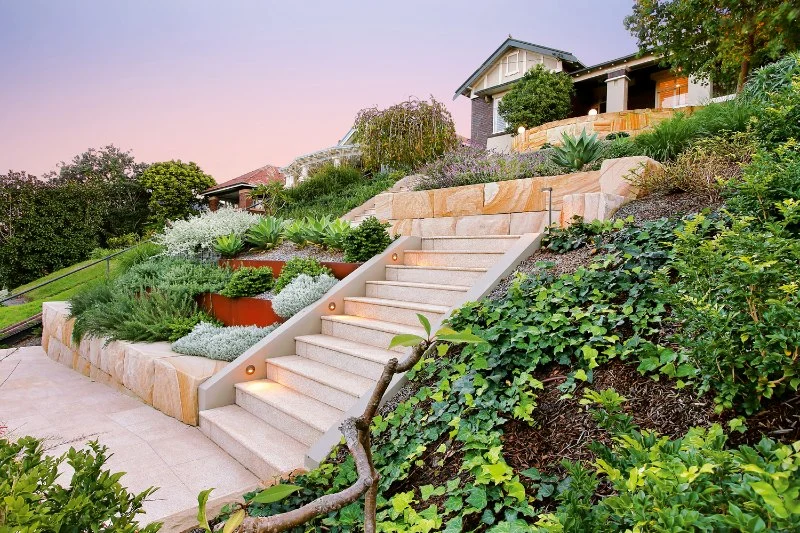
- 1. Challenges of Sloped Yards
- 2. Why Terracing and Retaining Walls Are Effective Solutions
- 3. How to Terrace Your Sloped Yard
- 4. Designing and Building Retaining Walls
- 5. Maintenance and Care for Terraces and Retaining Walls
1. Challenges of Sloped Yards
Sloped yards can present a number of challenges for homeowners looking to create a functional and aesthetically pleasing outdoor space. Whether you're dealing with a slight incline or a steep slope, the uneven terrain can make it difficult to plant gardens, install pathways, or even create usable lawn space. In addition, sloped yards can lead to drainage issues, erosion, and difficulties with mowing or maintaining the landscape.
However, rather than seeing the slope as an obstacle, it can be viewed as an opportunity to create a dynamic, visually appealing garden or backyard. With the right landscaping techniques, including terracing and retaining walls, sloped yards can be transformed into multi-level, functional spaces that are both beautiful and practical.
2. Why Terracing and Retaining Walls Are Effective Solutions
Two of the most effective solutions for dealing with sloped yards are terracing and retaining walls. Both approaches help break up the slope into manageable levels, providing a stable foundation for planting, walking, and enjoying your outdoor space.
Terracing involves creating a series of steps or levels on a slope, usually with the help of soil and strategically placed plants. This method can help reduce soil erosion, improve drainage, and create a more usable area. Retaining walls, on the other hand, are structures designed to hold back soil and create flat, level areas in a yard. These walls can be made from various materials, including stone, brick, concrete, or timber, and they offer both aesthetic and functional benefits.
When combined, terracing and retaining walls can create a beautiful and practical layout, allowing for the installation of gardens, patios, or even outdoor entertainment areas on sloped land. These solutions also help control drainage, preventing water runoff and erosion, which are common problems in sloped yards.
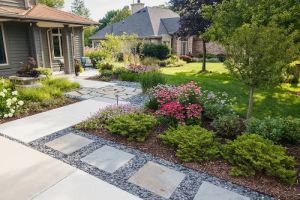
Ginkgo Leaf Studio LLC
CedarburgOzaukee CountyWisconsin
W61N306 Washington Ave #201, Cedarburg, WI 53012, USA
3. How to Terrace Your Sloped Yard
Terracing is an excellent way to make use of a sloped yard while adding visual interest to the landscape. Follow these steps to create your own terraces:
- Assess the Slope: Before you begin, it’s important to evaluate the severity of the slope. Steeper slopes will require more effort and resources to terrace, so understanding the degree of the incline will help you plan accordingly.
- Plan the Layout: Consider the layout of your terraces. You’ll want to decide how many levels you need and the size of each terrace. Ensure that the terraces are wide enough to accommodate plants or other features, and plan for adequate drainage between the levels to prevent water buildup.
- Dig and Level the Ground: Start by digging the ground to create flat surfaces for each terrace. This will involve cutting into the slope, which may require some heavy machinery depending on the size of your project.
- Install Border or Retaining Structures: Each terrace will need a border to prevent soil from washing away. You can use natural stone, timber, or even concrete to build these borders. This is where retaining walls can be integrated into your terracing project to hold the soil in place.
- Plant and Landscape: Once the terraces are created, plant them with drought-tolerant or ground-cover plants to prevent soil erosion. Consider adding mulch or decorative stones to reduce maintenance and enhance the appearance of each level.
Terracing is a labor-intensive project but can be incredibly rewarding, especially when combined with thoughtful planting and creative design. It’s a great way to create usable space in an otherwise unusable area.
4. Designing and Building Retaining Walls
Retaining walls are a key part of terracing and are also effective on their own for creating level areas in a sloped yard. Whether you're looking to install a small decorative wall or a larger, more functional barrier, here’s how you can design and build your own retaining wall:
- Determine the Purpose: Before building a retaining wall, decide whether its primary purpose is aesthetic, functional, or both. A decorative retaining wall can add beauty to your yard, while a functional wall can address issues like erosion or drainage.
- Choose the Right Materials: The materials you choose for your retaining wall will depend on your desired look, durability, and the amount of maintenance you’re willing to undertake. Stone and concrete are sturdy options, while timber can give a more natural, rustic look.
- Plan the Wall’s Height: The height of your retaining wall will depend on the slope and the number of terraces you want to create. Typically, walls can range from a few inches to several feet tall, but keep in mind that taller walls may require professional help to ensure structural integrity.
- Excavate the Area: Begin by excavating the area where the wall will be built. Make sure the base is level and firm to support the weight of the wall. You may need to dig down a few inches to ensure a solid foundation.
- Build the Wall: Start laying your chosen materials from the bottom up, making sure each layer is level and secure. Use a level to ensure that the wall is straight and even as you go. If you’re building a taller wall, you may need to use drainage pipes or gravel behind the wall to prevent water pressure from building up.
Retaining walls can significantly enhance the functionality and beauty of your sloped yard, making it a more livable space. Whether you want to create a flower garden, vegetable beds, or simply level the ground for a seating area, retaining walls can help achieve these goals.
5. Maintenance and Care for Terraces and Retaining Walls
Both terracing and retaining walls require regular maintenance to keep them in good condition. Here are some tips for maintaining these features:
- Check for Erosion: Regularly inspect your terraces and retaining walls for signs of erosion or shifting soil. Adding more soil or rocks to reinforce the structure may be necessary over time.
- Maintain Proper Drainage: Proper drainage is key to the longevity of your terraces and retaining walls. Make sure that water is not pooling behind the walls or on the terraces themselves, as this can weaken the structure.
- Replenish Planting Beds: If you’ve planted your terraces, periodically check the plants for health. Replace any plants that have died, and refresh the soil as needed to ensure healthy growth.
- Inspect Wall Materials: Check for any damage to the materials used in your retaining wall. Stone and brick walls may need to be resealed, while timber may need to be replaced or treated for rot and pests.
By performing regular maintenance on your terracing and retaining wall features, you can ensure that they remain functional and beautiful for years to come.
If you’re looking for expert advice or products to help with your sloped yard landscaping, be sure to visit Beautiful Landscapes for the best recommendations on materials, tools, and services to create your dream yard.



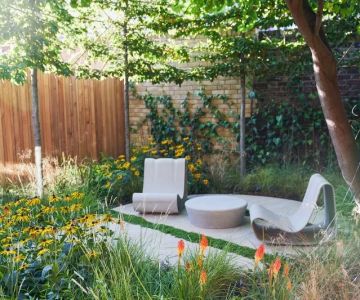



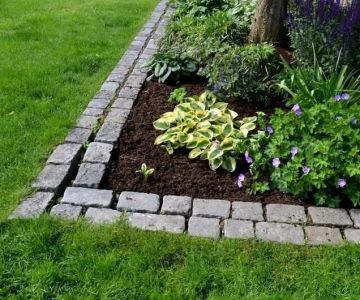
 Professional Maintenance and Landscaping4.0 (35 reviews)
Professional Maintenance and Landscaping4.0 (35 reviews)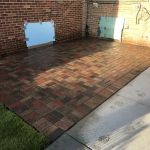 L. Miller Landscaping & Design5.0 (7 reviews)
L. Miller Landscaping & Design5.0 (7 reviews) Prime Cut Lawn Care3.0 (9 reviews)
Prime Cut Lawn Care3.0 (9 reviews)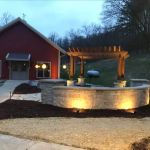 Mindham Landscapes, LLC0.0 (0 reviews)
Mindham Landscapes, LLC0.0 (0 reviews) Diemer's Property Services LLC5.0 (18 reviews)
Diemer's Property Services LLC5.0 (18 reviews) Stryker Outdoor Solutions LLC5.0 (11 reviews)
Stryker Outdoor Solutions LLC5.0 (11 reviews) How to Landscape a Rooftop Garden for Relaxation
How to Landscape a Rooftop Garden for Relaxation How to Install Low-Voltage Lighting in Your Garden: A Step-by-Step Guide
How to Install Low-Voltage Lighting in Your Garden: A Step-by-Step Guide How to Grow a Herb Garden in Your Landscape: A Step-by-Step Guide
How to Grow a Herb Garden in Your Landscape: A Step-by-Step Guide How to Incorporate Steps & Elevation Into Design for a Beautiful Outdoor Space
How to Incorporate Steps & Elevation Into Design for a Beautiful Outdoor Space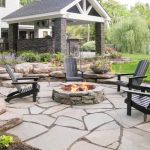 How to Plan & Build a Backyard Fire Pit Area for Maximum Enjoyment
How to Plan & Build a Backyard Fire Pit Area for Maximum Enjoyment How to Revive a Neglected Lawn Step by Step
How to Revive a Neglected Lawn Step by Step